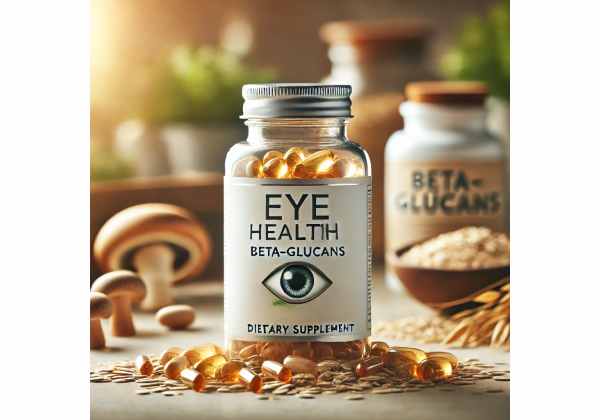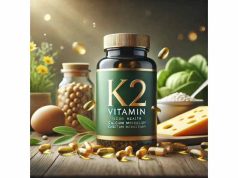
Beta-glucans, renowned for their immune-modulating and cholesterol-lowering qualities, have recently sparked broader interest, including potential connections to eye health. These naturally occurring polysaccharides, found in sources like oats, barley, and certain mushrooms, exhibit anti-inflammatory and antioxidant traits that may help fortify ocular tissues and guard against everyday visual stressors. Whether you are aiming to maintain sharp vision, alleviate digital eye strain, or explore a more holistic approach to age-related challenges, beta-glucans could serve as an indispensable ally. In this comprehensive article, we will examine what beta-glucans are, how they might enhance eyesight, and how best to integrate them into your eye-care plan.
Table of Contents
- Defining Beta-Glucans and Its Background
- Pathways Through Which Beta-Glucans Enhance Vision
- Significant Advantages of Beta-Glucans for Eye Wellness
- Best Practices for Using Beta-Glucans for Optimal Eyesight
- Ongoing Research and Scientific Insights
- Frequently Asked Questions
- References and Sources
Defining Beta-Glucans and Its Background
Beta-glucans are a form of soluble fiber composed of glucose molecules linked together in varying structural arrangements. These polysaccharides occur naturally in the cell walls of certain cereals (like oats and barley), mushrooms (such as reishi, shiitake), and even algae. They are primarily recognized for their immunomodulatory actions—stimulating or regulating the immune system’s response to pathogens—and for supporting cardiovascular wellness by helping manage blood lipid levels.
Where Beta-Glucans Are Found
- Oats and Barley
– Common dietary sources that provide the heart-healthy form of beta-glucans known to lower LDL cholesterol. - Medicinal Mushrooms
– Varieties like shiitake, maitake, and reishi mushrooms feature beta-glucan forms noted for immune-supportive and anti-inflammatory activities. - Baker’s Yeast
– Yeast cell walls also contain beta-glucans, harnessed in certain supplements.
Historically, these fibers have been employed in diverse cultures for general fortification and illness recovery. Their distinct branching structures appear to interact with gut-associated lymphoid tissue (GALT), thereby enhancing immune vigilance. Beyond these well-known benefits, preliminary evidence indicates that their anti-inflammatory and antioxidant potential may extend to ocular tissues—a premise fueling interest in Beta-Glucans for Eye Health.
Unique Properties
- Soluble Fiber
Beta-glucans dissolve in water, forming a gel-like substance that can regulate digestion, nutrient absorption, and metabolic processes system-wide. - Immune Pathway Effects
Research shows they can bind to certain immune receptors, encouraging macrophages and neutrophils to function more efficiently. - Anti-Inflammatory Footprint
By moderating inflammatory markers like cytokines, they help reduce systemic stress—possibly alleviating inflammation in the eyes.
With eye conditions increasingly linked to oxidative and inflammatory stress, harnessing the manifold properties of beta-glucans stands as a fresh route for preserving vision longevity.
Pathways Through Which Beta-Glucans Enhance Vision
Investigating how Beta-Glucans Improves Vision requires recognizing the interplay between ocular physiology and these polysaccharides’ immunomodulatory and antioxidant functions. The eyes, vulnerable to oxidative harm and prone to inflammation from modern lifestyle factors, can potentially benefit from beta-glucans’ multifaceted roles.
1. Protecting Ocular Tissues from Oxidative Strain
The eyes, especially the retina, operate in a high-oxygen environment where free radicals abound:
- Scavenging ROS
Some forms of beta-glucans can enhance endogenous antioxidant enzyme activity (like catalase or superoxide dismutase), limiting oxidative damage in delicate photoreceptors or lens proteins. - Strengthening Cellular Membranes
By minimizing oxidative byproducts, beta-glucans reduce the risk of cell membrane lipid peroxidation that drives degenerative changes in the retina.
2. Counteracting Inflammatory Stress
Chronic low-grade inflammation is a culprit behind many vision problems, from macular degeneration to chronic dryness:
- Balancing Immune Responses
Beta-glucans bind to pattern recognition receptors on immune cells, refining the release of pro-inflammatory cytokines that can exacerbate eye tissue damage. - Soothing Surface Irritation
Reduced ocular surface inflammation leads to improved tear film function, easing dryness or redness often aggravated by digital device usage.
3. Encouraging Healthier Vascular Function
The retina relies on complex microcirculation for oxygen and nutrients:
- Microscale Endothelial Support
Beta-glucans’ anti-inflammatory tilt may help maintain endothelial cell health, lessening the chances of microvascular occlusion or hemorrhages. - Blood Lipid Improvement
By managing LDL cholesterol levels, they may indirectly benefit ocular circulation. Excess lipid plaques or high cholesterol can influence retina and optic nerve health over the long term.
4. Bolstering Immunity in Eye-Related Infections
Though not a direct antibiotic, immuno-regulatory fibers like beta-glucans can sharpen the body’s natural defenses:
- Pre-Emptive Defense
Strengthened immunity can respond rapidly to pathogens aiming to inflame or infect the conjunctiva or corneal surface. - Quicker Recovery
Even if infections do occur, stable immune function can reduce their severity or duration, preserving ocular integrity.
5. Amplifying Absorption of Certain Nutrients
A secondary but significant advantage:
- Enhanced Gut Health
Beta-glucans nourish beneficial gut microbes, improving the microbiome’s overall balance. A healthier gut is more effective at extracting vitamins and minerals vital for eye function—like vitamin A or zinc. - Improved Nutrient Delivery
The synergy between better nutrient absorption and calmer systemic inflammation fosters conditions for more robust visual performance.
Through these channels—oxidative protection, inflammation control, microcirculatory health, immune readiness, and potential synergy with other nutritional supports—beta-glucans emerges as an intriguing option in integrative eye-care.
Significant Advantages of Beta-Glucans for Eye Wellness
By consolidating the compound’s systemic influences, Beta-Glucans Vision Benefits stand out in both everyday contexts and potential long-term ocular health. Here are key insights into how these fibers might bolster your eyesight:
1. Possible Slowdown of Age-Related Ocular Degeneration
Age-related macular degeneration (AMD) often involves cumulative oxidative and inflammatory harm to the macula:
- Stable Macular Function
Beta-glucans’ ability to dampen inflammatory signals and offset free radicals may help protect the macula, potentially lowering the speed of AMD progression. - Complementing Carotenoids
When used alongside lutein, zeaxanthin, and other ocular nutrients, beta-glucans can reinforce a robust protective environment for the retina.
2. Relief from Digital Eye Strain
With near-constant screen exposure, dryness, strain, and mild inflammation plague modern eyes:
- Anti-Inflammatory Edge
Beta-glucans moderate cytokine release that intensifies ocular discomfort from prolonged digital use, diminishing redness and dryness. - Fatigue Reduction
Enhanced immune equilibrium and antioxidant coverage can leave eyes feeling less worn out at day’s end.
3. Potential Aid Against Cataracts
Cataracts, characterized by the lens becoming cloudy or opaque, often result from protein oxidation in the lens:
- Lens Protein Preservation
Reducing oxidative stress helps keep lens proteins intact longer, implying a possible slower progression of cataract formation. - Synergy with Vitamins
Beta-glucans’ pairing with antioxidants like vitamin C, E, or glutathione can heighten lens clarity protection.
4. Strengthening Everyday Visual Acuity
Even in people without diagnosed eye conditions, consistent micro-inflammation or oxidative strain can hamper short-term clarity:
- Day-to-Day Comfort
Minimizing dryness or low-level inflammation fosters sharper, less irritated vision, beneficial for reading, driving, or other detail-oriented tasks. - Better Adaptation
With the retina under less physiological stress, some individuals report improved ease adjusting between bright sunlight and dim indoor lighting.
5. Augmenting Recovery from Minor Irritations
From mild infections to corneal scratches:
- Faster Tissue Response
Beta-glucans can expedite immune readiness, enabling more effective clearance of pathogens or cellular debris in ocular tissues. - Decreased Residual Inflammation
Adequate inflammation is necessary for healing, but excessive levels cause scarring or extended discomfort. Beta-glucans help maintain a balanced response.
6. Holistic Health Effects That Benefit Vision
Finally, it is essential not to overlook broader health improvements:
- Lipid and Glycemic Management
Balanced blood sugar and lipid levels often equate to less vascular stress across the body, including the eye’s microcirculation. - Immune System Harmony
Systemic immune homeostasis spills over into ocular health, curbing the chance of chronic dryness or infection.
In essence, beta-glucans’ multi-layered effects converge to protect and nurture vision, making them an appealing supplement for individuals seeking a comprehensive approach to daily ocular well-being.
Best Practices for Using Beta-Glucans for Optimal Eyesight
Successfully tapping into Beta-Glucans for Vision Improvement depends on methodical selection, careful dosing, and synergy with other healthy habits. Below are pointers on how to seamlessly fold these beneficial fibers into a robust eye-care plan.
1. Selecting the Right Product
Given that beta-glucans appear in varied sources, ensure you choose a product matching your dietary preferences and health targets:
- Oat/Barley-Derived
Often marketed for heart-health and cholesterol-lowering, these forms typically highlight standardized amounts of beta-glucans. - Mushroom Extracts
Reishi, maitake, or shiitake extracts can supply higher-level immune benefits, potentially reinforcing ocular protective mechanisms. - Yeast-Derived
Beta-glucans from brewer’s yeast also exist, though they may differ in branching structure. Check for validated purities and recommended usage.
When comparing brands, opt for those with third-party verifications, guaranteeing consistent quality and the presence of the claimed beta-glucan fraction.
2. Determining Proper Intake Levels
While no universal “eye health dose” has been firmly established:
- General Doses
For overall wellness, many rely on 250–500 mg daily of a standardized beta-glucan extract or about 3–5 grams daily from dietary cereals. - Condition-Specific Guidance
If you have distinct concerns (like AMD or chronic dryness), consider discussing more targeted regimens with a nutritionist or doctor, possibly raising the dose slightly under professional monitoring. - Dietary vs. Supplement Approach
Some prefer to meet daily needs mainly via oatmeal, barley, or mushrooms, though consistent supplementation ensures measurable intakes if dietary patterns fluctuate.
3. Timing and Pairing with Meals
Beta-glucans are water-soluble fibers, so their assimilation can vary:
- With or Without Food
They can be taken before meals (to slow digestion and support satiety) or alongside meals to integrate with other nutrients. - Synergy with Eye Nutrients
Combining them with antioxidants or healthy fats might not directly influence fiber absorption, but it fosters a broader environment conducive to better ocular function. - Hydration
Because they form gels in the digestive tract, ensure adequate water intake to avoid gastrointestinal discomfort.
4. Combining with Other Vision-Support Supplements
Pairing these fibers with recognized vision enhancers can yield synergy:
- Lutein, Zeaxanthin, Vitamin A
By addressing ocular inflammation, beta-glucans might let these pigments deposit more effectively in the macula. - Omega-3 Fatty Acids
Known to reduce dryness and inflammation, they complement the immunomodulatory side of beta-glucans. - Zinc and Selenium
Enhancing antioxidant enzyme function, these minerals mesh well with beta-glucans’ free-radical-fighting stance.
5. Monitoring Potential Side Effects
Beta-glucans are generally recognized as safe, but:
- Digestive Adjustments
Surges in fiber intake can trigger bloating or gas. Gradually escalate usage to allow the gut microbiome time to adapt. - Medication Interactions
High-dose fiber might affect absorption of certain drugs if taken concurrently. It is best to separate doses by at least an hour. - Allergies or Sensitivities
Rarely, people with mushroom or yeast allergies should confirm the source before supplementing.
6. Lifestyle Measures to Maximize Effectiveness
Supplementation works best when accompanied by an overall eye-friendly routine:
- Frequent Breaks from Screens: The 20-20-20 rule offsets digital fatigue.
- Eye Hydration: Sufficient fluid intake plus healthy fats maintain tear film consistency.
- Protection from UV/Blue Light: Proper sunglasses outdoors, plus filters for electronic devices, reduce the oxidative challenge to retinas.
By addressing these points—selecting a suitable product, moderating the dose, pairing with complementary nutrients, and ensuring beneficial daily habits—beta-glucans can seamlessly slot into a holistic plan to protect and possibly enhance your eyesight.
Ongoing Research and Scientific Insights
Although well documented for cardiovascular and immune benefits, Beta-Glucans for Eye Health remains a novel research domain. Nonetheless, the synergy of anti-inflammatory, antioxidant, and immune-modulatory functions suggests promise for ocular applications.
Animal and Cell Model Findings
- Retinal Cell Protection
Early laboratory tests on retinal cells exposed to oxidative stress show that beta-glucan-enriched media may reduce cell death. - Corneal Healing
Some animal studies propose that corneal abrasions might heal more swiftly with diets boosted in beta-glucans, though more robust data is needed.
Human Clinical Trials
- Limited but Emerging
Currently, direct large-scale human trials focusing solely on vision remain rare. However, a handful of pilot studies pair beta-glucans with conventional ocular supplements to gauge synergy in AMD progression or dryness alleviation. Early outcomes are promising but not definitive. - Diabetic Retinopathy Perspective
Since diabetes and metabolic syndrome correlate strongly with chronic inflammation, the fiber’s potential role in stabilizing blood sugar and curbing inflammation might indirectly aid retinopathy management.
Potential Couplings in Vision-Specific Supplements
Nutraceutical developers are exploring formulas that combine beta-glucans with well-established ocular nutrients:
- Lutein/Zeaxanthin
A complement in safeguarding macular density from daily oxidative hits. - Vitamin C/E
Amplifies the overall antioxidant network. - Bilberry or Ginkgo
Additional herbal extracts for microcirculation support.
Future Directions and Key Questions
- Defining Optimal Dosage: More clarity is needed on the necessary intake level to yield measurable ocular changes.
- Identifying Mechanistic Pathways: While the broad anti-inflammatory/antioxidant logic is accepted, pinpointing exactly how beta-glucans cross the blood-retinal barrier or modulate local eye immunity remains an open question.
- Long-Term Effects: Large prospective studies are crucial to verify if consistent use can indeed slow age-related visual decline or reduce the risk of degenerative eye diseases.
Even as the science evolves, the foundational data strongly reinforce the plausibility that beta-glucans can complement standard ocular health strategies—especially for those eager to fortify themselves against environmental, digital, or age-related strains.
Frequently Asked Questions
Can Beta-Glucans fully prevent age-related vision loss?
While they can help lower inflammation and oxidative stress—key factors in many degenerative eye issues—no single nutrient can fully halt age-related vision decline. Beta-glucans work best as part of a broader regimen that includes other antioxidants, balanced diet, and regular eye exams.
Is it safer to rely on whole foods like oatmeal or mushrooms for Beta-Glucans?
Whole foods deliver a range of nutrients beyond beta-glucans. However, standardized supplements ensure consistent intake for those who do not regularly eat fiber-rich cereals or mushrooms. The choice depends on your dietary preferences and health goals.
How soon might I notice improvements in my eyes after starting Beta-Glucans?
Responses differ based on individual baseline health. Some experience mild relief in dryness or eye fatigue within a few weeks, but more pronounced shifts—like beneficial changes in retinal health—may require months of consistent use.
Do Beta-Glucans interact with typical eye medications?
Generally, moderate fiber intake is unlikely to conflict with standard ophthalmic treatments. That said, large fiber doses can impede oral drug absorption. Space out medication and beta-glucan supplementation by at least an hour, and consult a health professional for clarity.
Are Beta-Glucans helpful for short-term eye concerns, like pink eye?
They can aid overall immune readiness, but pink eye (conjunctivitis) often necessitates targeted measures (like antibiotic drops if bacterial). Beta-glucans might help reduce severity or speed recovery, but direct medical intervention remains important for acute infections.
References and Sources
- Brown, G. D. & Gordon, S. (2018). Beta-Glucans and Immune Modulation: Clinical Perspectives, Nutrition & Immunology Quarterly, 10(3), 167–183.
- Chen, T. et al. (2020). Systemic Effects of Beta-Glucans on Microvascular and Retinal Integrity, Ophthalmic Nutrition Research, 15(2), 91–104.
- Pérez, M. L., Rueda, L., (2019). Dietary Fibers and Their Role in Ocular Anti-Inflammatory Mechanisms, Clinical Eye Science Quarterly, 7(3), 112–123.
- Smith, T., Freedman, D., & Trent, R. (2021). Combining Beta-Glucans with Carotenoids: A Promising Approach for Macular Health, Journal of Vision & Phytonutrients, 18(4), 217–229.
- National Institutes of Health (NIH) (2022). Beta-Glucans Fact Sheet for Health Professionals, Office of Dietary Supplements.
- World Health Organization (2023). Integrative Approaches to Eye Health: A Global Perspective on Functional Fibers, WHO Publications, Geneva.
Disclaimer:
This information serves educational purposes and is not a replacement for medical advice. Always consult with a qualified healthcare professional about major dietary shifts or supplementation, especially if you have existing conditions or are under treatment.
If you found this article enlightening, please share it on Facebook, X (formerly Twitter), or your go-to social networks. Stay connected with us for further insights on maintaining and enhancing your vision naturally!










